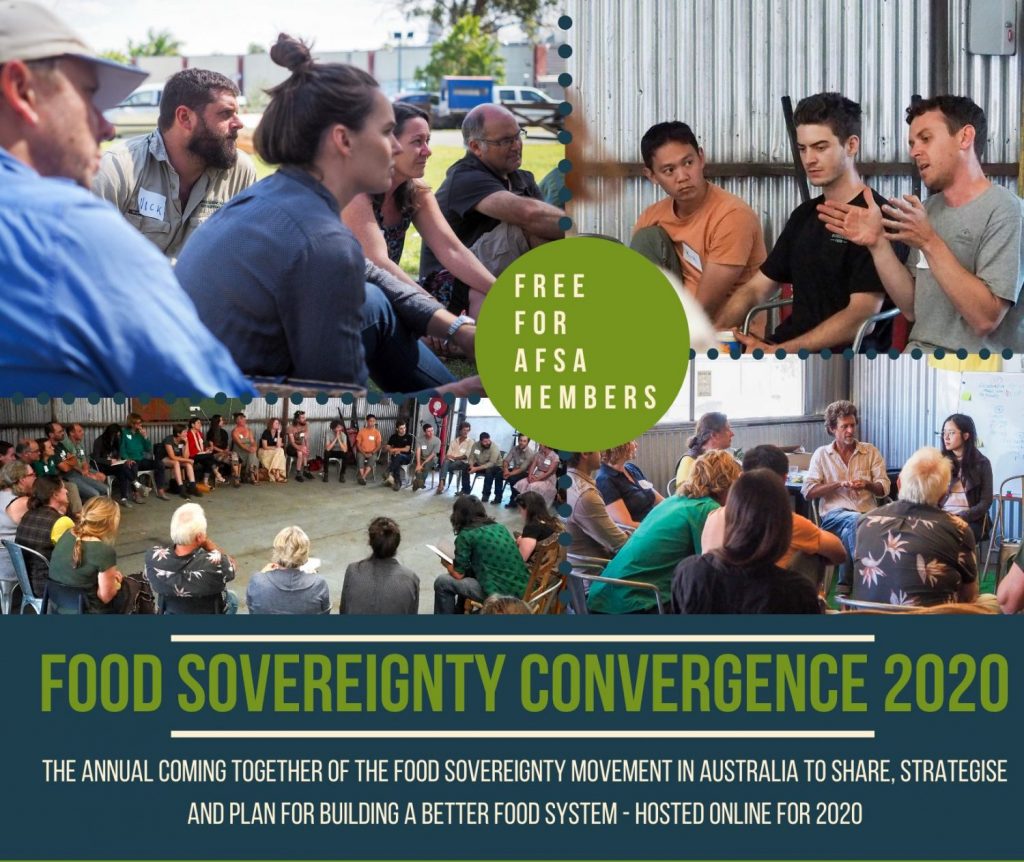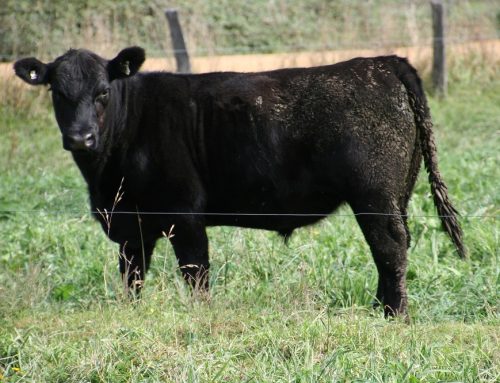On 26 August 2020, the Australian Treasurer, Josh Frydenberg and the Agricultural Minister David Littleproud announced that the ACCC would commence a three-month inquiry into bargaining power in supply chains for perishable agricultural goods in Australia.
AFSA’s response highlighted the fragility of supply chains overreliant on the supermarket duopoly and just-in-time logistics, and the urgent need for agroecological, decentralised, and community-controlled agricultural and food systems. We called on the inquiry to support greater investment in small-scale farmers and resilient food systems that priortise feeding communities over commodity profits. You can read the full submission below:
AFSA welcomes this Inquiry and looks forward to further genuine consultation given the tight timeframe for submissions in this case. We note the terms of reference, particularly the first:
“how the relative bargaining power of farmers, processors and retailers involved in supply chains for perishable agricultural goods affects trading practices, which can, in turn, affect the efficient operation of these markets”
The imbalance of bargaining power and the reluctance to be a part of a long, vulnerable supply chain has been fundamental to the vast majority of our farmer members’ decisions to opt for alternative farming and distribution models that we will outline below.
We would entreat the Commission to read all submissions in light of the massive impact the COVID-19 pandemic has had on the makeup of our food supply chain. Above all else, the pandemic has shown that sustainability and ensuring a resilient local food supply should be the number one consideration.
‘A considerable inertia, manifest in public policies, corporate structures, education systems, consumer habits and investment in research, favours the currently dominant model of agriculture and food systems, representing a series of lock-ins. In the dominant model, environmental and social externalities are not properly considered and, therefore, not appropriately factored into decisions influencing the development of food systems. To overcome this inertia and challenge the status quo, it is imperative to create a level playing field on which different approaches can be equitably compared. This requires redirection of investments and efforts to design and implement innovative approaches, including agroecological approaches, that provide concrete alternatives to the dominant model and open transition pathways towards SFSs [sustainable food systems].’
Issues
The Food and Farming System in Australia
Australia has over its colonised era set up a regulatory and commercial environment that prioritises expensive, high-tech solutions, while our national food system is struggling under the burden of worsening public health, undemocratic concentration of market power, and an unsustainable focus on narrowly defined economic outcomes. The current regulatory requirements ensure the oligopoly of the big operators over smaller farmers, and multinational corporations over SME’s that have traditionally been the lifeblood of our regional and rural communities. This narrow and misaligned focus is paid for in rural inequity, highlighted by our shrinking rural communities, consistent lack of investment in rural infrastructure and significantly poorer social and mental health outcomes for these communities.
The inequities that exist between the players in the dominant, industrialised supply chain is not assisting ailing rural communities, is creating unacceptable animal welfare outcomes, and is a direct driver of multiple negative ecological impacts contributing to drought, fires, and climate change. Extreme, unfair competitive pricing strategies at the retail level come at a cost to any or all of the farmers, animal welfare and the environment. This extreme competition, a race to the bottom if you like, enables a system that sells off our valuable natural resources – soil health and water – in the form of agricultural commodities for the profit of a minority of private interests. Over-grazing, over-tilling, and repeated and prolonged use of agrichemicals has depleted Australian soils of carbon and organic matter to dangerously unhealthy levels. Australian water resources are traded as commodity and allocated unfairly to big irrigators primarily producing food and fibre for export, severely limiting water access for many farms, communities, and the environment.
Moreover, the COVID-19 pandemic has clearly demonstrated the fragility of the industrialised system, in contrast to the agility with which small-scale local producers were able to adapt and continue to operate ensuring their products were still supplied to their markets, a lot of whom increased as people moved away from supermarkets and their emptying shelves.
Australian producers are being forced to adapt quickly to climate changes that happen in months and years, not decades. In addition, increasing the demand on farmers to produce more with the focus on chemical fertilisers, genetically modified crops, and intensified livestock production systems does not lead to a sustainable system.
We take the view that while we need to support our farmers with access to markets, perpetuating and encouraging more intensive, large-scale, and export-focused farming is not the solution to long-term food security and food sovereignty in Australia.
Farmers committed to producing healthy, sustainable food for their local communities should have assistance, support and training for the continual necessary transition to genuinely sustainable forms of production. Small-scale farmers across Australia are already engaged in sustainable practices to provide nutritious food for their communities while caring for the soil they grow on.
Agroecology and its Potential
Agroecological farming is the application of ecology to the design and management of sustainable agroecosystems. It is a whole-of-system approach to agriculture and food systems development based on local food system experiences. It links human and ecological health, culture, economics and social wellbeing in an effort to sustain agricultural production, healthy environments, and viable food and farming communities.
For example, this is achieved through using renewable resources such as biological nitrogen fixation, using on-farm resources as much as possible and recycling on-farm nutrients. Agroecology aims to minimise toxins and conserve soils by using perennials, no-till or reduced tillage methods, mulching, rotational grazing, and mixed-species paddock rotations.
The most important aim of agroecology is to re-establish ecological relationships that can occur naturally on the farm instead of monoculture farming’s narrow, input- and output-reliant paradigm with its associated externalised costs. Pests, diseases and weeds are carefully managed in diversified systems instead of ‘controlled’ with damaging chemicals. Intercropping and cover cropping draw in beneficial insects and keep moisture in the soil. Integrated livestock ensure a symbiotic relationship between soils and animals. Efforts are made to adapt plants and animals to the ecological conditions of the farm rather than modifying the farm to meet the needs of the crops and animals.
From an economic view, agroecological farmers aim to avoid dependence on a single crop or products. They seek out alternative markets and many rely on Community Supported Agriculture (CSA), farmers’ markets, ‘pick your own’ marketing, value-added products, processing on-farm and agro-tourism. These direct connections and regular engagement with local and urban consumers are of material benefit to the profitability of farmers, and importantly, they are also of further benefit to the economic and social health of rural communities.
The 2019 report from the UN World Committee on Food Security (CFS) undertaken by the High Level Panel of Experts (HLPE) Agroecological and other innovative approaches for sustainable agriculture and food systems that enhance food security and nutrition made very clear recommendations for States and local authorities to support a transition to agroecological and other innovative approaches, and away from industrialised agriculture. It is worth repeating some of those recommendations at some length here:
All stakeholders involved in food systems (including: States, local authorities, intergovernmental organizations (IGOs), civil society and the private sector, research and academic institutions) should learn from agroecological and other innovative approaches concrete ways to foster transformation of food systems by improving resource efficiency, strengthening resilience and securing social equity/responsibility. In particular, they should:
a) take into accountand value the diversity of food systems and their contexts across scales when developing transition pathways to SFSs;
b) use relevant performance metrics for food systems that consider all environmental, social and economic impacts of food production and consumption;
c) recognize the importance of improving the ecological footprint of food systems as an operational principle for transitioning to SFSs, and thereby encourage appropriate consumption alongside agricultural and other food production practices that maintain or enhance, rather than deplete, natural capital;
d) encourage integration of transdisciplinary science and local (including indigenous) knowledge in participatory innovation processes that transform food systems.
States and IGOs should:
a) Support diversified and resilient production systems, including mixed livestock, fish, cropping and agroforestry, that preserve and enhance biodiversity, as well as the natural resource base, exploring:
i. redirecting subsidies and incentives that at present benefit unsustainable practices, to support transition towards SFSs;
ii. supporting use of participatory and inclusive territorial management planning to identify and foster locally sustainable practices and to protect common natural resources at different levels (landscape and community, national, regional and global);
iii. building adaptation of international agreements and national regulations on genetic resources and intellectual property to better take into account farmers’ access to diverse, traditional and locally adapted genetic resources, as well as farmer-to-farmer seed exchange;
States, IGOs and, as appropriate, local authorities should:
a) develop strategies to promote transitions towards SFS setting long-term goals at national and regional levels, ensuring policy coherence across sectors at different levels, bringing together public administrations responsible for, and other relevant stakeholders involved in, agriculture, forestry, trade, health, gender, education, energy and environment;
b) explore ways for trade agreements and rules to better support transitions towards more sustainable agriculture and food systems;
c) support inclusive and democratic decision-making mechanisms at all levels in food systems and take specific measures to ensure the participation of marginalized and vulnerable groups most at risk of food insecurity and malnutrition;
States and IGOs, in collaboration with academic institutions, civil society and the private sector, should:
a) redirect public and private investment and specifically agricultural subsidies to support farms based on the comprehensive performance metrics set out in 5a that assess their sustainability and impact on FSN;
b) recognize the importance of true cost accounting for negative as well as positive externalities in food systems and take steps to effectively implement it where appropriate.
Down, Down, Prices are Down
While Coles Supermarkets moved away from its not-so-catchy jingle and accompanying big red hand in 2018, signifying a notional end to the famous “price war” between Australia’s two major supermarket chains5, the reality remains that price is the primary factor driving retailer and consumer behaviour when it comes to food shopping. Unfortunately the behaviours that this drives back into the food chain are simply unfair and unconscionable. Nowhere was this made more evident than amongst dairy farmers who bore the brunt of the eight-year long milk price wars.
We clearly don’t need to educate the Commission, which itself found that the supermarkets’ bargaining power drove down the price paid to processors, who in turn used their bargaining power to drive down the price paid to farmers6. AFSA would suggest that these same predatory behaviours observed in the dairy industry exist across all the markets the subject of this Inquiry – meat products, dairy, eggs, and horticultural and viticultural produce. This is despite how strong industry representation may be, as in the end each farmer generally “goes it alone” when it comes to finding their market. To quote from “Collective Bargaining in the Agricultural Sector” published by the Rural Industries Research and Development Corporation in 2015:
Most farms in Australia remain relatively small, although there is an observable process of consolidation in some sectors such as vegetables, with business-oriented farmers employing staff and accumulating productive land. Such farmers may be in a relatively strong bargaining position vis-a-vis the various buyers, who tend to be highly concentrated in most food sectors in Australia. However, although this varies from sector to sector, the majority of individual farms are not in a position to guarantee the volume and consistent quality that major buyers such as supermarkets and processors seek. They are also in a weak bargaining position because whereas there is a multitude of suppliers the buyers can choose from, there are few buyers between which the farmer can realistically switch. In some categories their product is fresh and perishable, leaving them with few realistic options to negotiate. Individual farmers tend to suffer a loss of opportunity as a consequence and remain consistent price-takers. The farmers’ share of the surplus generated by the supply and value chains in each sector is squeezed since food prices are under constant downward pressure in retail markets.
It would be the topic of an entire PhD research paper to try to understand why a consumer seeks rock bottom prices for food but is prepared to pay, for instance, the exorbitant market price for a new smartphone. Suffice at this point to quote from the insights of Ant Wilson, one of AFSA’s committee members and a horticulture farmer, into this issue when rebutting a Good Food article claiming produce at farmers markets was “too expensive”:
“…debating the intricate finances of food production is beside the point. Food should not be cheap. Food should not be cheap.
Capitalist economics have commodified food and divorced it from its true value. Industrial food systems have used unethical practices to extract value from food while luring us into the belief that it should be cheap. These injustices might be in the form of environmental degradation, horrific animal welfare standards or underpaid workers.
Even in a privileged country like our own… farmers are so passionate about what they do that they are willing to work for below the minimum wage. That’s not to say that farmers, especially those selling directly via farmers markets or Community Supported Agriculture, can’t make a decent income, but when that income is spread over the number of hours they put in, it starts to look less decent. I know few farms that don’t also make use of unpaid labour in the form of family, friends or volunteers.
All food costs ‘x’ to grow. Using economies of scale and efficiencies it can be grown more cheaply, but there is a limit. Where that limit is undercut, the cost is being externalised. Just because the consumer is not paying the whole cost, does not mean it is not being paid. Is it the soil, the animals, the ocean or the workers that pay that cost?
I entirely agree that wholefood should be accessible to people on low-incomes, however, it is food producers who make up a large portion of the world’s poor. ‘Some of the most abject poverty in the world is concentrated in farming communities’9. Using the price of food as a lever, you can raise populations out of poverty. Lower income communities can then afford to pay themselves and their workers fairly. There is a myriad of creative solutions to make food accessible to all.
When we put food that is grown in ethical and ecologically-sound ways next to its industrial counter-part, it may seem expensive (I would argue this is a complete fallacy when it comes to plant foods, but it is certainly apparent with regards to animal products). If it is too expensive – eat less. To produce and consume the amount of meat we do now is only possible because of industrial agriculture and that model is driving climate catastrophe. Eat better meat, less.”
The COVID-19 impact on Australian Food Systems and the rise of alternative food distribution models
One of many things the COVID-19 pandemic has highlighted is the role industrial agriculture plays in increasing risks of future pandemics. In the very moment that we are suffering the negative impacts of the current pandemic, the Government is proposing to increase the ecological pressures that led to it in the first place. Changes in land and water use due to agriculture and extractive industries are the biggest drivers of loss of biodiversity, and loss of biodiversity is a key driver of the (re-)emergence of zoonotic diseases. Australia must change course to conserve biodiversity – both on and off our farms – and pushing for greater exports is entirely contrary to all recommendations from the FAO, the CFS, and the CBD that would see us reduce the risks.
AFSA would suggest there are several other key learnings from the COVID-19 pandemic. Supermarket shelves emptied fast as panic buying set in. Their ‘just-in-time’ model of distribution proved to be as precarious as food security researchers have warned us for many years.
Many farmers’ markets were closed, either by risk-averse and ill-informed councils, or the organisers themselves, though others remained open, with social distancing protocols in place, or moved to online platforms and thrived. This left many small-scale farmers in the desperate position of having to rapidly find other ways to connect to their eaters, and forced some farmers’ market shoppers back into the arms of their jilted supermarkets. But on the whole the reports were promising – those who approached the situation with a can-do attitude found their markets and flourished.
Farmers whose usual market is food service were thrown into crisis along with the nation’s chefs and other workers, and had to rapidly find new markets for their produce. For small-scale farmers, there has been a greater capacity to pivot to selling directly to households, though in many cases this meant arduous hours doing direct deliveries without any time to develop these new systems.
Entities such as Open Food Network rose to the challenge to bring a thrilling wave of new farmers onto their platform to directly connect with eaters looking for alternatives to the supermarkets. The upsurge in people seeking memberships with community-supported agriculture (CSA) farms was breathtaking. Farms that had struggled to compete with peoples’ addiction to ‘convenience’ and achieve full subscriptions are now turning people away or working out how to increase production to “let more people in”.
For large-scale farms, there was no such agility in a global pandemic. For example, a watermelon grower in the Northern Territory whose market is primarily restaurants, caterers, and airlines, has very little choice but to watch the melons rot in the fields. With 600 tonnes versus 6 tonnes of produce to sell, selling direct to eaters is not an option19.
The pandemic has demonstrated that globalised food systems are brittle and threatened, while local food systems, solidarity economies, and strongly networked and collectivised communities are strong. AFSA requests that this learning be first and foremost in the Commission’s ongoing consideration of Australia’s perishable agriculture industry. The Commission should also research and report on direct sales models such as the Community Supported Agriculture model (CSA)20, farmers markets, and online sales such as through the Open Food Network mentioned above. We have farmer members who would be more than happy to directly participate and provide any information the Commission may require.





